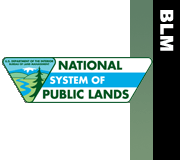|
Print Page | |||||||||||||||
| Bakersfield Field Office | ||||||||||||||||
Oil and Gas Operations Bureau of Land Management - Bakersfield Field Office The BLM manages 15 million acres of surface and 47 million acres of mineral estate in California. Every day about 800,000 barrels of oil is produced in California. As a state California is the fourth largest oil producer, only Alaska, Texas, and Louisiana produce more. Considering BLM administered leases nationwide, California BLM is the fourth largest producer. The highest producing federal onshore lease is in California. Five of the ten most productive oil fields in the United States are in California. Federal leases in California, ranging in size from one well leases, producing only a barrel or two per day, up to a lease with over 1,000 wells producing nearly 10,000 barrels per day. Approximately 7% of the total wells in California are federal wells. Inspection and Enforcement BLM technicians are responsible for inspecting field operations, ensuring production accountability, and enforcing safety requirements on over three hundred producing leases and units containing more than 8,000 wells. Reservoir Management The BLM is also responsible for ensuring that oil and gas is not drained from federal lands without appropriate compensation from the federal lessee/operator. The Reservoir Management staff reviews all leases for drainage from offset wells, and if offset wells are determined to be draining oil from a federal lease, then the lessee/operator of the federal lease is required to drill a protective well, pay compensatory royalty, or enter into a protective agreement. In early 1992, an Oil and Gas Work Group was established comprised of representatives from both government and industry. The mission of the Work Group is to promote the timely resolution of issues and to facilitate the sharing of information between the BLM, California Division of Oil, Gas, And Geothermal Resources (CDOGGR), and the Oil & Gas Industry. The Work Group is also responsible for developing and overseeing subgroups to ensure timely resolution of issues. This Group has been very successful in developing methods to resolve a number of issues of concern to industry. These successes are exemplified in the resolution of issues related to:
Orphan and Idle Wells We have been proactive in developing a program to remediate our large number of orphan and idle wells. BLM is a full partner in the Idle Well Subcommittee of the Conservation Committee of California Oil and Gas Producers (CCCOGP). Through this subcommittee, BLM is working with CDOGGR and industry to address idle well issues on both federal and private lands in California. In 1998 SB1763, with language provided by the subcommittee, passed the state legislature and was signed into law. This legislation requires, effective January 1999, that California oil and gas producers choose from a list of options designed to decrease numbers of long-term idle wells in the state. It requires either (1) dramatically increasing bond coverage on all leases with long-term idle wells; (2) paying increased idle well fees; or (3) submitting a plan to reduce idle well numbers by a specified yearly amount. This legislation also increased the State's existing idle/deserted well abatement fund to $1 million per year. In fact, using those funds to match BLM funds, from 2002 to 2003 we abandoned and reclaimed the surface of 118 orphan wells and three sumps in a joint effort between the CDOGGR and BLM. Largely as a result of the cooperative efforts between the BLM and CDOGGR, there were 1,000 federal wells abandoned between FY 2002 and FY 2006, over twice as many as in the previous five-year period. Automated Fluid Minerals Support System (AFMSS) The Bakersfield Field Office continues to provide leadership in further development of the Automated Fluid Minerals Support System (AFMSS). The AFMSS program has become an integral part of day-to-day business, and progress continues to be made. In fact, we had our first permit that was received, processed, and approved entirely electronically in June 2002. We are continuing our efforts to coordinate with the CDOGGR with the goal that an operator can submit one permit which will automatically be routed to the proper agency, and a single approval by either agency can be automatically transmitted and formatted for the other agency's database. BLM 2005 California Oil and Gas statistics:
Oil and Gas Links
Outreach Interagency Cooperation
|
||||||||||||||||







